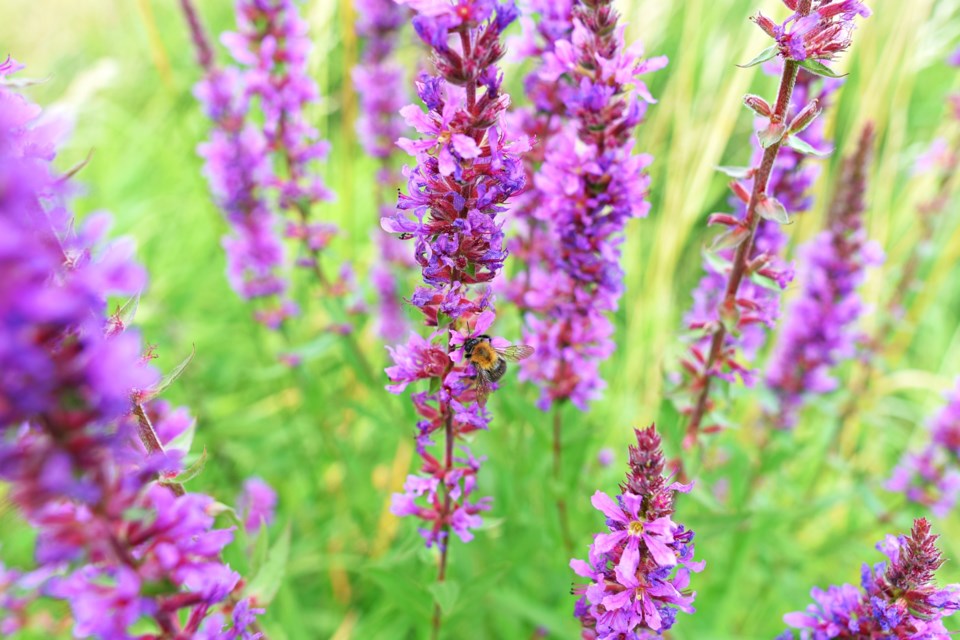Spring is here and people across the state are gardening, hiking and getting outside to enjoy the beautiful weather. While most are unaware, all the traipsing outdoors can lead to the spread of noxious, or non-native, weeds.
Governor Polis declared this week as Noxious Weed Awareness Week.
The designation comes ahead of the 2021 growing season, as Colorado’s Department of Agriculture, or CDA, recognizes the work of weed management agencies throughout the state. This marks the 31st year of Colorado’s Noxious Weed Act, last updated in 2017.
“Weed Awareness Week is a time to celebrate the hard work of noxious weed managers, and to learn more about noxious weeds at local events being held around the state,” said Steve Ryder, state weed coordinator at CDA in a press release.
Noxious weeds are non-native plant species that threaten the integrity and biodiversity of Colorado’s ecology.
“Controlling noxious weeds is critical to the city’s sustainability and conservation goals,” said Jim Krick, natural resources project manager for Longmont. “Among the negative impacts caused by noxious weeds, they outcompete and displace the native vegetation that our wildlife depend on, reduce agricultural productivity, impede outdoor recreation, and can increase the occurrence of wildfires.”
Noxious weeds are split into three categories, some of which are prevalent in Longmont. List A Species, like the hairy willow-herb, myrtle spurge and purple loosestrife, are designated for eradication by the state, county and city. List B species, like the Canada thistle and hoary cress, are subject to management plans developed by state and local agencies to slow the spread. List C species, like chicory and burdock, are subject to management plans that promote education and biological control but aren’t required to be eradicated.
Despite the beauty of some of the plants, many of which resemble wildflowers, the plants are invasive and capable of rapid reproduction. The purple loosestrife can produce 2-3 million seeds per plant every year. Three-quarters of Canada thistle is underground, even though the plant can grow up to four feet above ground. The deep roots can invade all types of land, making it difficult for other plants to grow around it, according to the CDA fact sheet.
Longmont has an Integrated Weed Management Plan that uses various control methods, including prevention, education for the residents and collaboration with other agencies. More direct methods include re-vegetation of lands with diverse grasses and other native plants, as well as mechanical, chemical and biological methods.
“The city recognizes the importance of using multiple control methods to control noxious weeds and has used biocontrols in the past such as the stem boring weevil to help control Dalmatian toadflax at Button Rock Preserve,” Krick said. “Biocontrols have not been used recently as they require relatively large, dense populations of weeds. Fortunately the city does not have any good release sites for those species which biocontrols are available for.”
Longmont residents looking to further educate themselves on the noxious and invasive species have a variety of resources. CDA has a full list of noxious weeds, with photos and identifications, on their website. The Colorado Weed Management Association has a plethora of information and resources available as well.
“It’s important to make sure to not spread noxious weeds when we visit our parks, open spaces and nature areas. Before leaving home and before returning, clean weed seeds and plant fragments from your boots, bikes, dogs, horses, watercraft and fishing gear,” Krick said. “Also, keep yourself and any canine companions on the trail to prevent collecting weed seeds in clothes and fur in the first place.”
For anyone looking to take a more hands-on approach, residents can sign up for volunteer opportunities at the city’s JoinUs portal. The next event is the Ninth Annual Ann Henson Weed Pull on June 4.



